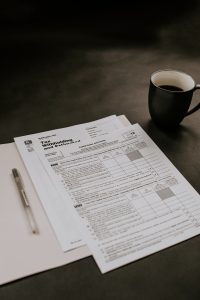Forex trading is a highly popular form of investment that has caught the attention of many individuals worldwide. It involves buying and selling currencies with the aim of making a profit. With the advancement of technology, many traders have turned to automation in their forex trading activities. This is where a robot for forex trading comes in. In this article, we will explain how to create a robot for forex trading.
What is a Forex Trading Robot?
A forex trading robot, also known as an expert advisor, is a software program that can automatically execute trades on behalf of a trader. The robot uses pre-programmed instructions to analyze market data and make trading decisions. A forex trading robot can be customized to execute trades based on specific trading strategies, risk tolerance, and investment goals.
Steps to Create a Forex Trading Robot
Creating a forex trading robot requires technical knowledge and expertise in programming. The following are the steps to create a forex trading robot:
1. Define the Trading Strategy
The first step in creating a forex trading robot is to define the trading strategy. This involves deciding on the type of trading strategy to use, such as trend following, scalping, or swing trading. The trading strategy should align with the trader’s investment goals and risk tolerance.
2. Choose a Programming Language
The next step is to choose a programming language to develop the forex trading robot. The most popular programming languages for forex trading robots are MQL4 and MQL5, which are used for the MetaTrader 4 and MetaTrader 5 platforms, respectively. Other programming languages that can be used include Python, C++, and Java.
3. Develop the Trading Algorithm
The trading algorithm is the heart of the forex trading robot. It is the set of rules that the robot uses to make trading decisions. The algorithm should be based on the trading strategy and should include parameters such as entry and exit points, stop loss levels, and take profit levels.
4. Test the Robot
After developing the trading algorithm, the next step is to test the robot. This involves backtesting the robot on historical data to see how it performs under different market conditions. The robot should be tested on a large sample of data to ensure that it is robust and can handle different market scenarios.
5. Optimize the Robot
Once the robot has been tested, the next step is to optimize it. This involves adjusting the parameters of the trading algorithm to improve its performance. The optimization process involves testing the robot on different settings to find the optimal parameters that yield the best results.
6. Deploy the Robot
After optimizing the robot, the final step is to deploy it on a trading platform. The robot can be deployed on a virtual private server (VPS) to ensure that it runs 24/7 without interruptions. The trader should monitor the performance of the robot and make adjustments as necessary.
Benefits of a Forex Trading Robot
There are several benefits of using a forex trading robot, including:
1. Automation – A forex trading robot allows traders to automate their trading activities, saving time and effort.
2. Objectivity – A robot trades based on predefined rules and parameters, eliminating emotions and biases.
3. Accuracy – A robot can analyze large amounts of data quickly and make accurate trading decisions.
4. Consistency – A robot can execute trades consistently without being affected by fatigue or other external factors.
Conclusion
Creating a forex trading robot requires technical knowledge and expertise in programming. Traders should define their trading strategy, choose a programming language, develop the trading algorithm, test and optimize the robot, and deploy it on a trading platform. A forex trading robot offers several benefits, including automation, objectivity, accuracy, and consistency.






